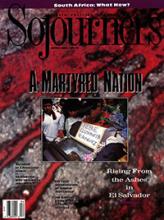I FIRST READ ABOUT HIM in 1961. My hometown newspaper, a small, eight-page weekly, was suddenly filled with stories about the local man accused of running a communist training school. The story ran for several weeks and was definitely the biggest story of the year.
I didn't know anything at the time about the civil rights movement, but having grown up in Cold War America, I thought that communism had to do with the threat of "foreign" domination. These articles were confusing, however. The only criteria for being called a communist appeared to be advocating interracial gatherings. This man Myles Horton admitted to that.
It was another three years before I actually met him, critical years between 1961 and 1964 that drastically changed us and the region. I left our hometown and went to school in Nashville, where there was an active civil rights movement. I began to put together values I had learned in a country Methodist church with the everyday contradictions swirling around me, and gradually became an active participant in the movement.
Like many other white Southerners, I developed a love/hate relationship with the region and fought a losing battle to deny my cultural roots. The Easter bombing of four young girls in a Birmingham church in 1963 made me understand once and for all that if I didn't speak and act on behalf of my own values, others would speak for me.
I decided to stay and fight. It was inevitable that my involvement in the movement would lead me to the Highlander Center and to the man whose "communist training school" had been closed by the state of Tennessee.
Read the Full Article

